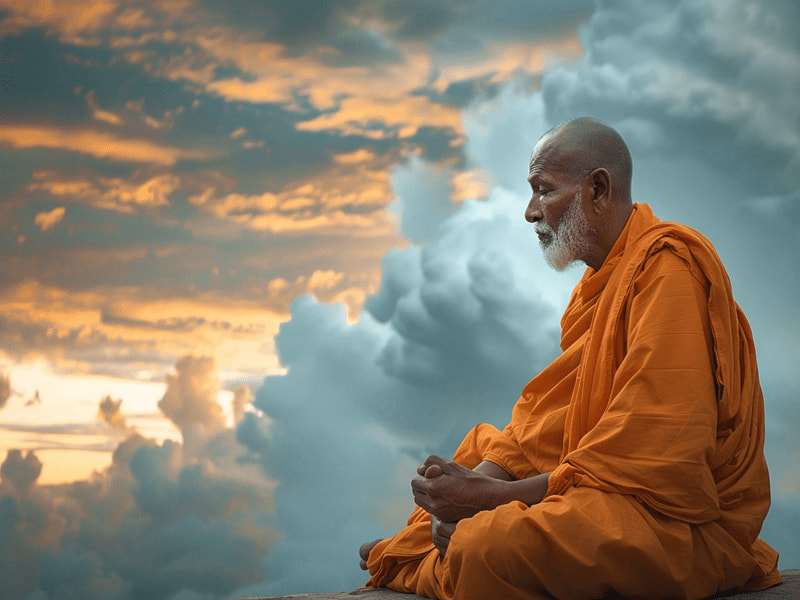Hinduism has a complex system of idols that is unparalleled in the world * One of the foundational beliefs of Judaism is that idol worship is false, and the worship of idols is harmful to humans * Within Hinduism, in the past, there were rites of immorality * Of all the idolatrous religions that collapsed before the truth and the light emanating from the belief in Israel through monotheistic religions, Hinduism has survived with vitality * In practice, Hinduism is considered idol worship b’shituf, and is forbidden like absolute idol worship * The idols and all their implements, images, and the sacrifices offered before them are prohibited for benefit
Q: What is the proper attitude in Judaism toward followers of Hinduism? Should they be treated with hostility because they are idolaters? Or perhaps, because of their moral qualities, the attitude toward them should be positive?
A: In general, on one hand, Judaism looks kindly upon humanity, trying to learn from every culture all the good that can be learned, and seeks to do good for every person according to their path. On the other hand, Judaism completely rejects idolatry and fights against the evil that arises from it. It should also be noted that there is no intention in this article to encompass even a small part of Hinduism, which more than a billion people believe in, but rather to express the Jewish position regarding what is generally known about it.
The Abundance of Idols
Hinduism first appeared about 3,500 years ago in the northwest of India, and from there, spread throughout India. The Indian subcontinent is characterized by the abundance of water flowing through it, rich crops, lush and diverse vegetation, magnificent landscapes of mountains, valleys, forests, rivers, and deserts, which are home to countless types of animals. Over generations, visitors to India have been amazed by the abundance and wealth of its land, landscapes, and people, describing with admiration the myriad colors, tastes, and smells that accompany life in India. The human society in India is also very diverse. Alongside extremely wealthy individuals who have built magnificent palaces, there are poor people living in the streets; sages and spiritual people, alongside ignorant and coarse-hearted individuals; criminals, alongside people of kindness; those with sensitivity and compassion for all living beings, alongside exploiters who are indifferent to the suffering of others. Interestingly, in India, these contradictions and incongruities coexist side by side in a kind of harmony, and a complex, multifaceted worldview.
Within this diverse and fertile abundance, Hinduism developed, with a system of idols that is unique in the world. Light and shadow, good and evil, spirit and matter coexist, inspiring many religious movements and rituals, countless idols and rich stories, alongside artistic creations in sculpture, painting, poetry, and dance. Hinduism, with its many idols, rituals, and captivating myths, reflects the rich and abundant diversity of the natural world and the human soul and society, providing different interpretations of both the good and the evil that exist in it, from which countless insights can be derived. Despite the variety of rituals for many gods, there were almost no fanatical religious wars in India, as the guiding principle of Hinduism is that there is room for all gods, and all combinations of them. Every group is free to choose the rituals that suit it, and even within each group, a person can emphasize the idols and rituals closest to their heart, or remain indifferent to all of them.
The Harm of Idolatry
One of the foundations of Jewish belief is that idolatry is false, and that the worship of idols is harmful to humanity. This can be seen by examining the negative impact it has on society and culture in India.
The basic nature of belief should prompt a person toward endless elevation, adding good and blessing to the world by connecting to the belief in one God. When all the forces of the world are directed toward Him, they increase the goodness of the world, and make it more perfected. On the other hand, idolatry perpetuates the reality as it is, gives it religious justification, and thus blocks the inner demand for elevation and correction. By manifesting divinity through all the forces and colors in man and nature, idolatry justifies even the evil traits in man, perpetuating them without striving to correct them. Therefore, there are good gods and evil gods, and man is confronted with both good and evil without a clear commitment to the good, as even the evil gods must be worshiped and desired. This means that while good is clearly good, and those who follow its path attain enlightenment and tranquility, since evil also represents divine forces, it too has a place, and perhaps its benefit is greater, since it can lead to more wealth, power, and pleasures.
As a result, as in all idolatrous religions, Hinduism in the past practiced immoral rites, and very rarely, even human sacrifices were made to appease the wrath of the evil gods. Additionally, the social structure in India, which divides society into castes (classes), results in many injustices toward those of lower classes, which are given religious justification. Perhaps at another time, we will expand on this.
The Uplifting Process of Hinduism
Over the thousands of years of Hinduism’s existence, a process of progress and elevation has occurred, leading to the belief in one supreme source, and the strengthening of moral values. There are two main reasons for this. The first and main one is that Hinduism did not remain stagnant, and alongside the increase in idols and the addition of countless interpretations and myths, it deepened its theological and philosophical thought. From focusing on sacrifices to idols, as described in the ancient scriptures – the Vedas (knowledge) – it elevated itself to rituals that express internal intention, which were interpreted in the Upanishads. Later, within the stories of the gods and myths (such as the Bhagavad Gita), emphasis was placed on elements that were hidden in the ancient texts about the supreme root known as Brahman, which is infinite, and the soul of the entire universe. Even the gods are manifestations of it. Subsequently, the moral foundation of choosing good was emphasized, as it is the force that drives the cycle of reincarnation, reflecting the cosmic order to which even the gods are subject.
The Encounter with Monotheistic Religions
Secondly, this position was strengthened following the encounter with monotheistic religions. About 1,200 years ago, Muslims conquered northern India, and later, its center. Around 500 years ago, Christians arrived in India, initially as Portuguese traders, and later, as the British. Through them, the belief in one God and moral values derived from the Bible were absorbed into Hindu culture. Over the years, many Hindus traveled to other countries and encountered monotheistic religions, and as a result, they deepened their understanding of Hinduism, and exposed its unifying principle. Thus, the values of the Bible, whether consciously or unconsciously, became fundamental values in Hindu culture, based on which modern Indian society tries to build itself in the areas of governance, law, education, science, and economics.
Ancient Source of Belief in One God
In the book of Rabbi Yissachar Hyman, “Judaism and Hinduism,” he quotes an ancient dialogue from the Upanishads, more than 2,500 years ago. A student asks the sage: “How many gods are there?” The sage replies: “Three thousand three hundred and thirty-three.” The student says: “Yes, of course, but how many gods are there really?” The sage replies: “Thirty-three.” The student says: “Yes, of course, but how many gods are there really?” The sage replies: “Three.” The student says: “Yes, of course, but how many gods are there really?” The sage replies: “One and a half.” The student says: “Yes, of course, but how many gods are there really?” The sage replies: “One.”
This ancient position has become more central in recent generations.
The Secret to the Vitality of Hinduism
It is important to note that the immense richness in Hinduism, which includes countless idols, rituals, and imagery, as well as the important place given to meditation that enables deep inner listening, has created an especially pluralistic position toward different religions and rituals. This has allowed it to absorb new ideas more easily and integrate them. When it encountered fundamental ideas like those in the teachings of Judaism, about belief in one God and the moral imperative to correct man and society, it was able to give them a central place, as they resonated with deep currents that had existed within it for ages. This is probably the reason that, of all the idolatrous religions that collapsed before the truth and the light that flowed from the belief in Judaism through monotheistic religions, Hinduism survived with vitality, as it has the ability to absorb lofty ideas, and progress through them.
Idolatry B’Shituf
In fact, since on one hand, Hinduism believes in a supreme source for all the gods, and on the other hand, in Hindu worship statues are venerated, offerings are made before them, and incense is burned, Hinduism is considered idolatry b’shituf (ed., the combination of belief in G-d with other idolatrous and alien beliefs). For Jews, who received the Torah from Sinai and were specifically commanded to believe in one God, idolatry with b’shituf is forbidden like absolute idolatry, and the idols and all their implements, images, and sacrifices offered before them, are prohibited by Jews to derive benefit from them.
However, for the B’nai Noach (Sons of Noach), according to most halakhic authorities, there is no prohibition against practicing idolatry b’shituf. Therefore, as long as the idol worshiper also directs his worship to the one God above all the gods, he does not violate any prohibition.
As They Remove the Impurities of Idolatry, They Will Contribute More to the World
Even though there is no prohibition in this, the harm caused by idolatrous materialization is great. Despite the great wealth in Hindu culture, its idolatrous side justifies many wrongdoings. However, it is not necessary for Hindus to abandon their religion for Christianity or Islam, as Rabbi Kook (L’Nevochei HaDor 8) indicates, but rather the goal is that they continue to progress and elevate themselves.
As they purify Hinduism from the notion that idols have inherent power, and increasingly emphasize the belief in one God and the morality that stems from it, they can use the beautiful ideas within Hinduism to bring more blessing to the world. From the wealth of thought and imagination about man and his soul, they can offer humanity an abundance of personal expression, and ways of dealing with the challenges of existence.
Thus, the pluralism within Hinduism will coalesce into a movement toward the correction of the world and will not dissipate, wasting precious energy in vain. The rich and magnificent art that developed in India in literature, poetry, painting, sculpture, architecture, music, and more, will inspire people from all nations to add beauty and pleasure to the world. They will also be able to provide the world with the special sensitivity they developed toward all living creatures and plants, based on respect for all beings, and a desire not to harm them. The more they adhere to belief in one God and morality, the more they will channel this sensitivity toward the overall movement of correcting and redeeming the world.
This article appears in the ‘Besheva’ newspaper and was translated from Hebrew.








